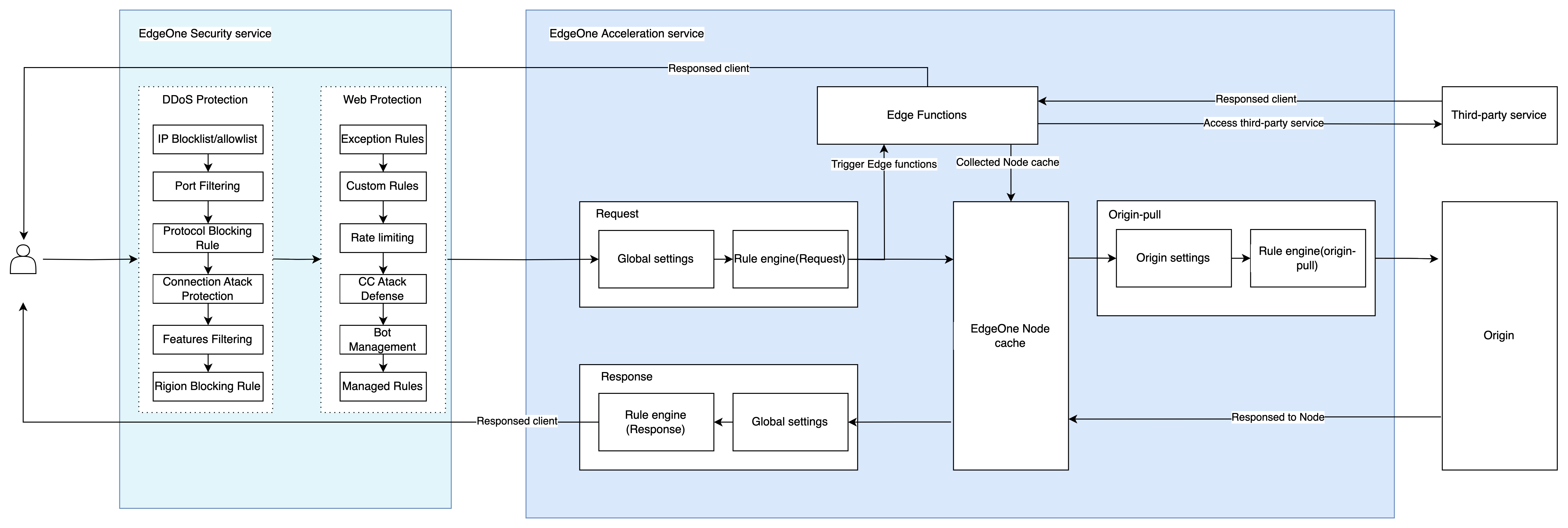Processing order
This article introduces the processing order of various module rules configured in the platform after the client initiates a request to EdgeOne, helping users understand the effective order and impact of the rules to ensure that the configured rules work as expected.
Processing order

After the user initiates a request, the request will be processed in the above order. For example, if the user configures the modification of HTTP headers in both the rule engine and the Edge functions, the final result will be based on the processing of the Edge functions since they are processed later.
1. Multiple rules may be triggered in the security service module, and the relevant processing order is as follows:
The DDoS protection request processing order only applies to users who have purchased the exclusive DDoS protection with L4 proxy. For details, please refer to the DDoS protection overview.
The Web protection module contains the bot management module. For the request processing order within the Web protection module, please refer to the Web Protection request processing order. For the rule application order within the bot management module, please refer to the bot management overview.
If a request triggers a security policy in the EdgeOne security protection module, and the action is interception, discard and blacklist, or IP blocking, the request will be rejected.
2. The rule priority in the rule engine is higher than the global site setting rules, and the rule application order in the rule engine is that the lower rules have higher priority. For details, please refer to the rule engine overview.
3. When a request triggers an Edge function rule, the request will be processed by the Edge functions. Edge functions can access third-party services, EdgeOne cache content, or return to the client's origin through sub-requests, or directly respond to client requests.
4. When requests to the EdgeOne node Cache, if the current node does not have Cache, it will continue to origin-pull. If the node hits the Cache, it will not Trigger the subsequent origin-pull rules and directly Return the corresponding resources to the user.